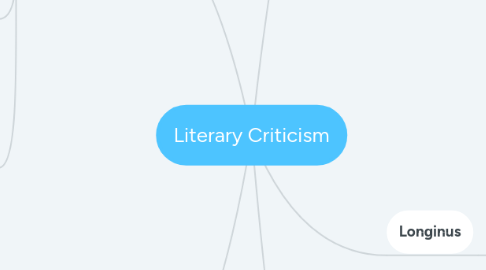
1. Dryden
1.1. "Liberal" neoclassicist
1.1.1. Imagination central
1.1.2. Perfection beyond Norms/Rules
1.1.2.1. Rejected role of law giver
1.1.3. Art is dynamic & pleasurable
1.2. As a Critic
1.2.1. Poet Laureate
1.2.1.1. Defensive of English Literature
1.2.1.2. Against French neoclassical drama
1.2.2. While Analysing, consider
1.2.2.1. Times
1.2.2.2. Place
1.2.2.3. Taste of People
1.3. Drama
1.3.1. Dramatik Poesy
1.3.2. Natural Rhyme, not Blank Verse
1.3.2.1. Tightens speech
1.3.2.2. Suits serious action
1.3.3. Imagination gives distinct flavor
1.3.3.1. But should be regulated
1.3.4. to delight and instruct
1.3.4.1. poetic imitation
1.3.4.1.1. Observation
1.3.4.1.2. Imitation
1.3.5. Rejects Aristotle's Unities
1.4. Art
1.4.1. Aim
1.4.1.1. Produce something more beautiful than life
1.4.1.2. Delight through beauty
2. Sir Philip Sidney
2.1. An Apology for Poetry
2.1.1. "School of Abuse", Gosson
2.1.1.1. systematic logical answers
2.1.1.1.1. Poetry teaches and moveth to virtue hence nothing is as fruitful as it
2.1.1.1.2. Poet never affirms and therefore never lies.
2.1.1.1.3. Plato’s example- turning Plato on himself - poets as abusing poetry rather than poetry nursing abuse
2.1.2. extensive historical examples
2.1.3. Poetry
2.1.3.1. aim - to 'instruct' and 'delight'
2.1.3.2. three kinds
2.1.3.2.1. ecclesiastical
2.1.3.2.2. philosophical
2.1.3.2.3. poetry as an imaginative treatment of life and nature
2.1.4. Poetry - the Superior Art?
2.1.4.1. philosophers - teach by precept
2.1.4.2. historians - teach by example
2.1.4.3. poets - can perform both
2.1.4.3.1. peerless?
2.2. logician, poet and critic
3. Aristotle
3.1. Poetics
3.2. Epic Poetry
3.2.1. Mimesis
3.2.2. Aim of Poetry
3.2.2.1. edify and elevate
3.3. Tragedy (Highest Form of Art)
3.3.1. mythos, or plot
3.3.2. character
3.3.3. diction
3.3.4. thought
3.3.5. spectacle
3.3.6. song
3.4. Characteristics of Tragedy
3.4.1. Unity of Plot
3.4.1.1. Rational Beginning
3.4.1.2. Rational End
3.4.1.3. Rational Middle
3.4.2. Unities
3.4.2.1. Time
3.4.2.2. Place
3.4.2.3. Action
3.4.3. Catharsis
3.4.3.1. Pity and Fear
3.4.3.2. Strong Emotion
4. Longinus
4.1. On the Sublime
4.1.1. Two sources of the sublime
4.1.1.1. Nature
4.1.1.1.1. capacity for strong emotion
4.1.1.1.2. employment of figures
4.1.1.1.3. grandeur of thought
4.1.1.2. Art
4.1.1.2.1. dignified expression
4.1.1.2.2. dignity of composition
4.1.2. The Purpose of Literature (achieved through the sublime)
4.1.2.1. to excite
4.1.2.2. to move
4.1.2.3. to transport
4.1.2.4. to elevate
4.1.3. Similarities with Aristotle
4.1.3.1. emphasis on rhetoric ("the magic of speech")
4.1.3.2. scientific approach
4.1.4. The First Romantic Critic?
4.1.4.1. nature's power over man
4.1.4.2. tilt towards the grand and the spectacular, as opposed to the little things from today and now
4.2. 1st century AD
4.2.1. authorship of On the Sublime contested
4.2.2. pseudo-Longinus
5. Horace
5.1. Ars Poetica
5.1.1. Matter
5.1.1.1. Teaching and Delight in Poetry
5.1.1.2. Functions of Poetry
5.1.1.2.1. Moral
5.1.1.2.2. Political
5.1.2. Form
5.1.3. Poet
5.1.3.1. Relation of a writer to his work
5.2. Importance of literary history and historical changes
5.3. Concerned about mundane aspect of poetry
5.4. Criticism given
5.4.1. Do not lose reputation by writing bad verse

